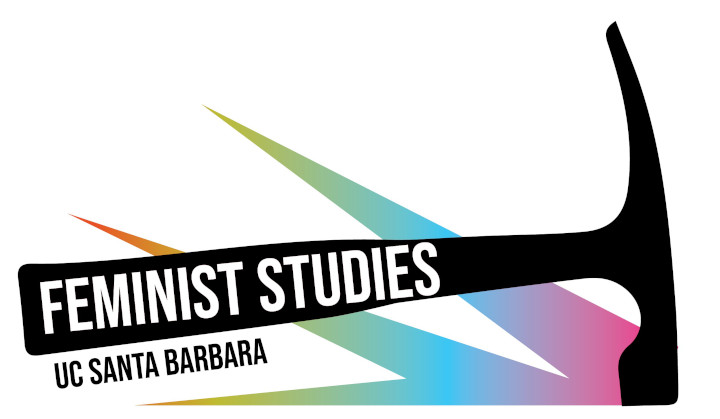Genders & Sexualities
“Genders and sexualities” concentrates on an interdisciplinary exploration of the historical and global processes by which desires, sexual acts, relationships, gender and sexual identities, communities, and movements have been constructed, transformed, and challenged. A number of our affiliated faculty members specialize in masculinities and queer sexualities, which are part of this concentration. Faculty members conducting research in this area include Professors Miller-Young, Richardson, DasGupta, Oaks, Rupp, Tyburczy and Ward.
Ongoing Research Projects in Genders & Sexualities
Leila J. Rupp, Queer Women on Campus: New Intimacies and Sexual Identities
My current research explores the intimacies and sexual identities among queer undergraduate women on campus in order to understand the social contexts that facilitate the emergence of new sexualities. I focus on two developments: the practices associated with the hookup culture, and the development of queer communities on campus.
Based on interviews with over a hundred racially and ethnically diverse UC Santa Barbara students, my research has so far identified a number of pathways college women take into same-sex sexual intimacies. Some women utilize the heteronormative spaceof hookup culture that eroticizes public physical intimacy between women by either deliberately experimenting or discovering new desires in the process of kissing and making out with other women. Some are encouraged to participate in a threesome with a boyfriend and another woman, while some seek out such a threesome because it is easier than approaching another woman directly. Some fall in love with their friends. Some experienced same-sex desire at a young age and either acted on it, ignored it, or hid it. Some came out in high school or joined a gay/straight alliance as allies. Some became involved in the queer community before engaging in any same-sex sexual behavior. In all of these ways, women students come to a variety of collective identities based on same-sex attraction, although those identities shift over time in response to subjective interpretations of desire and behavior and sociocultural, familial, and personal reactions to particular identities. Given the terms, such as “pansexual” and “fluid,” that women students use to describe their identities, the discourse of sexual fluidity itself would seem to be shaping what women do and how they think about what they do.
Both heteronormative pathways in hookup culture and the influence of queer organizations and communities on campus have profoundly changed the sexual practices and sexual identities of young women on campus, making clear that heterosocialand homosocial environments alike can facilitate same-sex intimacies among women. As a case study the research promises to revise fundamentally our understanding of the complex ways that new sexualities are forged in social contexts and to theorize the relationship between pathways to sexual intimacies and the adoption of collective identities.
Productive & Reproductive Labors
“Productive and reproductive labors” focuses on the economic (both paid and unpaid) and reproductive roles and experiences of diverse groups of women globally and historically and the complex relationship between employment and child-bearing and child-rearing. Faculty members include Professors Boris, Miller-Young, Oaks, and Ward.
Ongoing Research Projects in Productive & Reproductive Labors
Eileen Boris, Women's Labor as the World's Work: the ILO and the Engendering of Fair Globalization
Upon its founding in 1919, the International Labor Organization (ILO), an institution of global governance first attached to the League of Nations and now to the United Nations, conceived of the worker as a man employed in industry, transport, agriculture, or extractive labors, most of which took place away from residential spaces. Labor standards covered formal employment. Few women appeared in these sectors, except for textiles and plantations. When it came to women, historians have followed the same path, as did the ILO itself, by focusing on protective conventions that covered the woman worker on the basis of her female difference (such as maternity, night work, hazardous substances), casting her as a special type of worker, and then by looking at efforts to secure international conventions to promote anti-discrimination and employment opportunity that included “sex.” My project offers another lens to chart the gendering of labor standards by looking at where the majority of women worked globally: the home. It brings together the study of productive and reproductive labors. In recovering the intertwined history of home labors, my larger intent is to trace various associations between domestic service, family responsibilities, maternity and carework, subsistence home production, handicraft, and industrial homework, especially over the last seventy-five years. The distinct struggles around non-standard and informal sector employment would mark the setting of labor standards for the woman worker, increasingly projected as the rural women in the global South. Work once appearing to be peripheral to the global economy would move to the center of the ILO’s concern with the intensification of precarity and the reorganization of divisions of labor within and between nations. ILO conventions covering Home Work (#177) and Domestic Work (#189) represent the culmination of efforts that began after WWII but came to fruition only with the organizing of home-based workers themselves.
Race & Nation
“Race and nation” centers the experiences of African American, Latina, Asian American, Native American, and Arab American women—“the Third World within”—in a global context, attending to both the centrality of race and ethnicity and the inextricability of race and ethnicity (including whiteness) from all other categories of identity and difference. Faculty members specializing in this area include Professors Barvosa, Bobo, Boris, DasGupta, Richardson, Tyburczy and Miller-Young.
